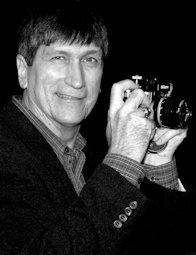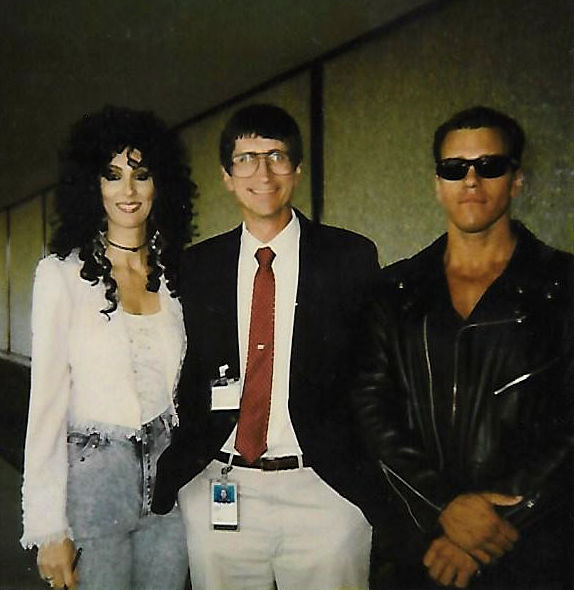 Practical Software Construction, LLC
Practical Software Construction, LLC 

I was born in Pittsburgh and had grown up in Pennsylvania, Maryland, Ohio, and Michigan. I attended a parochial high school in suburban Detroit that was divided into distinct social strata with nerds, special needs kids, and non-conformists on the bottom rung. I was a straight A student, with limited social skills and little appreciation for the social elites; so what friends I had were outside of school. Add to that the fact that my parents enforced a strict old-world morality at home given they were in their 50’s when I was a teen,and extremely religious; and I was just itching to leave home as soon as I graduated.

Although I qualified for a scholarship to MSU, given my SATs, I dropped out after one term in 1969. You have to understand the social milieu at the time. Dropping out of society to pursue some sort of utopian dream was extremely commonplace, and for me I felt I'd cut the constraints of my past. When I left Michigan State, some friends and I formed a Hippie commune in Ann Arbor that eventually migrated to Northern New Mexico. I had never been west of the Mississippi and I fell in love with the dry climate and warm weather of the Southwest.

I subsequently moved to Los Angeles in 1970. Southern California became my home for the next 45 years. By 1975 I’d been living in abject poverty for seven years, intermittently working temp jobs and residing in what could best be described as barrios. I realized that I was going to have to focus my intelligence on a career path if I wanted to crawl out of the poverty I'd allowed myself to descend into. Then in 1975 I got my big break; a temp agency sent me to a huge printing facility owned by Xerox that did specialized printing for the Aerospace industry. I worked diligently to prove myself and after a few months was offered a permanent position on the third shift. At the same time I was developing an avid interest in computers, and Xerox provided free tuition aid to its employees. Initially I went to LA Trade Tech in order to learn the combined skills required to become a Xerox Tech Rep (Machine Repair Man). That job paid better, and came with a free car. Once I became a Tech Rep I started taking Computer Science classes at UCLA. Nearing graduation I secured an internship in El Segundo with Xerox’s Production Laser Printer software support team; I never looked back.

For a Computer Scientist Xerox in the late 70s and early 80s Xerox was a fantastic place to work. The company was rolling in profits from their virtual monopoly in the copier business, the Palo Alto Research Center and El Segundo imaging center had created the world’s first desktop PCs with a mouse and graphical interface, and they were one of three companies that had invented ethernet and created the Arpanet. They also created a programming language far ahead of its time – Smalltalk; and were filing hundreds of patents in the nascent field of image processing (I’m co-author of three). They had a pension plan and often threw opulent parties for the employees, like renting the Queen Mary and providing entertainment.
I transferred to software development in the early 80’s and was given my own ‘Star’ pc long before the IBM pc or Apple Lisa hit the market. In fact, one of the chief developers on the Lisa (Larry Tessler) was a former Xerox Parc employees lured to Apple after Steve Jobs toured PARC in late 79. My initial assignments were on the 9700 high volume laser printer which used a modified Digital PDP-11 as a controller and rasterizer. We had rights to the kernel which we heavily modified to satisfy the deterministic real-time requirements of the hardware. All the code was in Macro-11 Assembly Language. Real-time debugging was accomplished by plugging a shim between the cpu and its socket. Between releases you created ‘patches’ in machine language, that were distributed on magnetic tapes.

There I am 40 years ago at Xerox sitting at an IBM 360 terminal. I spent my first 8 years as an IT professional writing assembler code and debugging in machine code. I lived through the evolution of languages from C to object oriented to code generating frameworks. I watched software design evolve from ad-hoc ‘spaghetti bowl’ to sophisticated reusable patterns. I watched the data center evolve from power hungry discrete transistor, magnetic core boards to CPUs, virtualization, and the cloud. I was part of the original Arpanet and watched it grow into what we now take for granted as the Internet. ‘I’ve seen things you people wouldn’t believe’ (Roy Batty in Blade Runner).

I never knew how good I had it until I departed Xerox. In terms of ‘office politics’ they were relatively non-existent in my experience as an engineer. Sadly, for Xerox, the Federal Government decided that it was a monopoly and forced them to sell a large portion of their key patents to foreign competitors like Canon, Minolta, and Ricoh. Xerox eventually lost the small and mid-size copier market, sold PARC, and was in the process of selling their entire engineering staff to HCL, an Indian company, when they offered an early retirement package to any software engineer that had 30 years and was 55 or older. By then they had eliminated the pension plan (grandfathering us older employees), and were laying people off in droves. Although my manager told me that HCL wanted me, I figured it was time to cash in my chips and hit the road.
I am grateful for the many pleasant years, great comradery, and financial security afforded me by Xerox. Some of my old friends from Xerox still get together for a Zoom meeting once a year; that’s how close we all were. I still call some of my old work mates throughout the year even though I no longer live in the same state. Xerox hired college graduates from UCLA, USC, UCSB, Stanford, CAL, MIT, etc.. Some of the smartest people I ever met in my life worked at Xerox, and I will forever be indebted to them for helping me develop as an engineer.

After leaving Xerox, I was hired by Amgen the bio-pharma company headquartered in Thousand Oaks, California. What attracted me was that it was 15 minutes from my house and my commute to Xerox had grown from 50 minutes to two hours over the years. At the time the CIO Dr. Hassan Dayem, who had worked at Merk and the Los Alamos National Laboratory, was establishing an ‘Enterprise Architecture’ division at Amgen. When he took over, much of the data transfer at Amgen was done by data-reentry and massive nightly ETLs. There were over 40 disparate technology stacks being supported in the data center. Very often the same data entity was in multiple systems, but unrecognized as such. He wanted to eliminate the confusion, replication, and waste by: establishing an Enterprise System Bus (based on web services) for real-time data exchange, create single sources of truth for shared entities (like ‘customer,’ ‘drug,’ and ‘clinical trial subject’), and set standards to limited the number of base technologies in the data center. When he interviewed me for a position in the nascent group, I was shocked to learn that he had read three of the papers I’d published as part of my PhD research. The head of Enterprise Architecture, Samir Abed, was committed to Hassan's vision; he was very dynamic and protective of the group.
In retrospect software wasn’t part and parcel of the company’s product, rather it was overhead; so when their drug pipeline wore thin IT became a cost-cutting target. Once Hassan retired and Samir left, the 'salade days' of Enterprise Architecture went with them.
The company eventually outsourced software development to Cognizant (an Indian company), and they redirected Enterprise Architecture away from systems architecture to Capability Modeling (using the Carnegie Mellon model). Capability Modeling was a job for one or two people, so they pushed me out to a division that had routinely questioned the intrusion of Enterprise Architecture into their private sphere of influence. The divisional architect actually came to my office and told me it was no problem; I would be his protege. 'Beware of Greeks bearing gifts.' It only took them three weeks to lay me off, during which time not one person from the division communicated with me. At the time I was very near Amgen’s mileposts for voluntary retirement (10 years and 55). So, I refused to sign my papers and told HR I was consulting a lawyer. The next day I received a ‘Voluntary Termination’ package that was worth approximately a year’s pay. I had to sign an agreement that I would never come back even as a contract employee. They could have had my services free for the year because I was planning to retire in a year (without a package).
In many ways I enjoyed my years at Amgen, given the pay and benefits were outstanding and some of the other IT professionals became friends. During the year after I left, I was often contacted by former ‘customers’ that I’d done design and development work for and asked if I could do contract work for them. I had to inform them that my agreement precluded any such work.
A few months after I left Amgen, my wife had a heart attack and kidney failure. The search for a new kidney led us to the Mayo Clinic in Phoenix, and the next chapter in our lives.